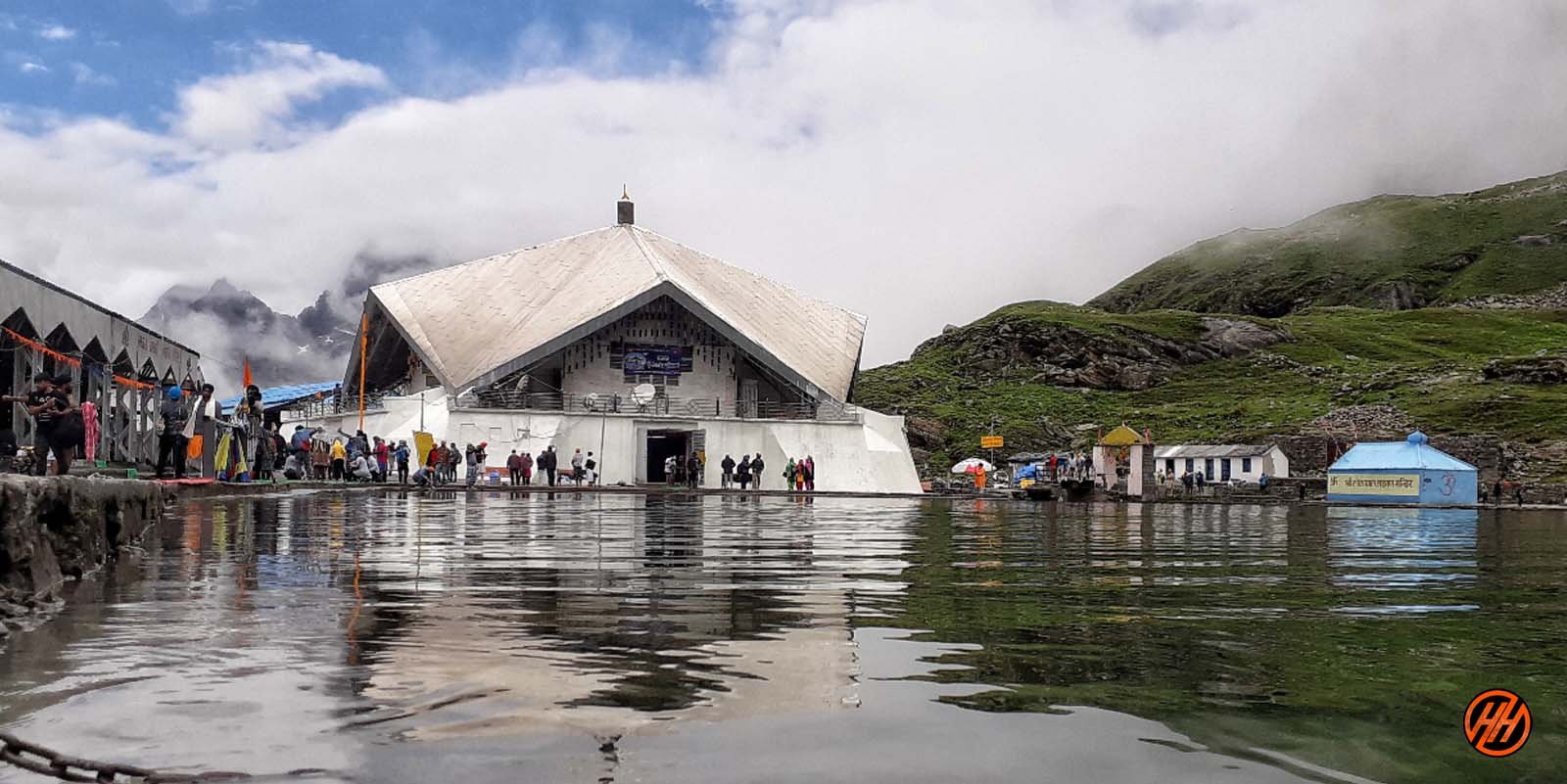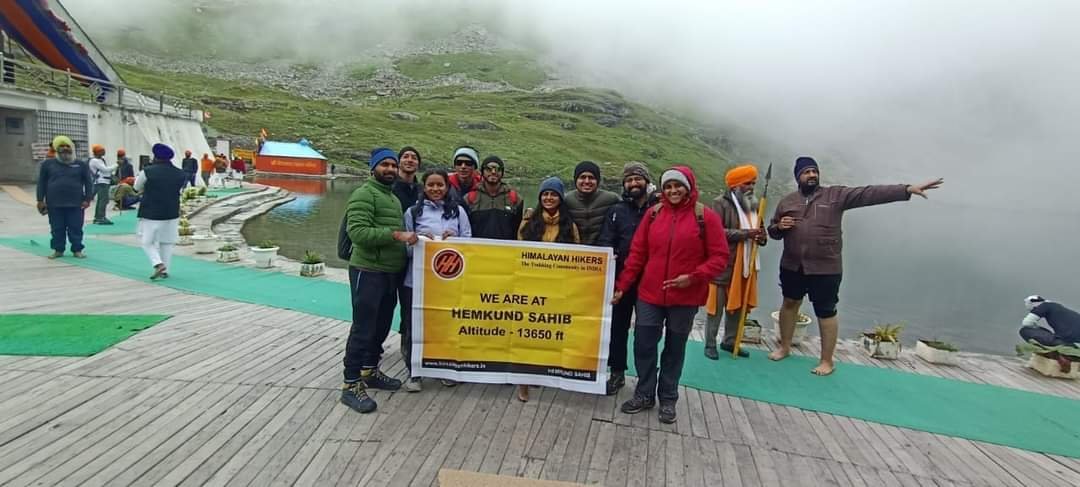
Whispers of the Himalayas: A Journey Through Govindghat
They say the mountains don’t speak in words, but in silences that echo louder than any city crowd. Govindghat was never on my bucket list, but somehow, it made its way into my bones long before I reached its stony steps.
Whispers of the Himalayas: Govindghat – Gateway to Hemkund Sahib & Sacred Rivers
It was early June when I found myself standing at the edge of a modest bridge, watching two rivers braid themselves into one. The Alaknanda River, ancient and assertive, met the younger Lakshman Ganga, which tumbled down in hurried streams from higher altitudes. Together, they sang a hymn I couldn’t translate, only felt.
Govindghat, perched at about 5,500 feet in Chamoli district, Uttarakhand, is easy to miss on the map but impossible to forget once you’ve arrived. It’s not a typical tourist destination in Uttarakhand, no luxury resorts, no curated Instagram cafes. What it has instead is a pulse. A reverent, steady heartbeat that guides thousands of spiritual trekkers, pilgrims, and Himalayan adventure seekers toward something higher both literally and spiritually.
More Than a Town: A Threshold
This place isn’t just a stopover, it’s a gateway to Himalayan trekking adventures and sacred spaces. Named after Guru Gobind Singh Ji, the tenth Sikh Guru, Govindghat holds particular spiritual gravity for the Sikh community. Every summer, thousands trek from here to Hemkund Sahib, a high-altitude Sikh pilgrimage site at 14,200 feet in the Garhwal Himalayas.
But the mountains don’t discriminate. Just a few kilometers away lies Badrinath Temple, part of the sacred Char Dham Yatra. And then there’s the lesser-known myth of Lakshman, the devoted brother of Lord Rama, who is believed to have meditated near the Lokpal Lake above Hemkund. The river that bears his name flows right past the town, restless and clear.
Govindghat, then, is not just geographically a sangam, it is a spiritual and cultural crossroad in the Indian Himalayas. Sikh prayers, Hindu hymns, Buddhist chants they all seem to linger in the air here like incense.
The Warmth of a Meal, the Stillness of a Shrine
As I stepped into the Govindghat Gurudwara, tired from the drive and slightly dizzy from the altitude, I was met with a kind of welcome I hadn’t expected. A volunteer, maybe in his sixties, handed me a plate of steaming dal and roti. “Waheguru da prashad,” he said with a smile that wrinkled his whole face.
I joined others on the floor, my pack beside me, sharing the same meal with strangers who felt oddly familiar. This was langar, the Sikh tradition of a community kitchen with no caste, no cost, no questions. Just food and warmth and a little silence between bites.
I noticed a young couple beside me. She wore a loose salwar, and he had trekking poles resting beside his backpack. They weren’t Sikh, nor Hindu, just travelers, like me. “Are you going to the valley?” the man asked, his voice soft. I nodded.

Trails to the Divine: Treks That Begin Here
Govindghat is the starting point for some of the best treks in Uttarakhand. For the faithful, it’s the beginning of the journey to the Hemkund Sahib and Kagbhusandi Lake treks. For the lovers, it’s the doorway to the Valley of Flowers Trek, a place so vibrantly alive that it makes you question whether Earth borrowed a bit of heaven.
We left early the next morning, passing mule trains and pilgrims wrapped in woolens, their breath fogging in the crisp mountain air. The trail begins gently, following the Lakshman Ganga upstream. But it soon tilts skyward, demanding your attention, your breath, and sometimes your knees.
The trek splits at a small village called Ghangaria, which is the base camp for many treks. From here, one path climbs to Hemkund, and the other leads to the UNESCO-recognized Valley of Flowers National Park.
The Sacred Summit: Hemkund Sahib
Reaching Hemkund is no joke because the final climb is steep, often icy, and oxygen thins with each step. But when you get there? A still, glacial lake mirrors the Hemkund Sahib Gurudwara’s white facade, and seven snow-capped peaks ring it like ancient guardians.
Pilgrims bathe in the freezing waters, which is more ritual than relief. I couldn’t bring myself to dive in, but I sat by the edge, fingers trailing the surface, trying to understand the kind of devotion that carries people here on foot, year after year.
For anyone considering a spiritual trek in India, Hemkund Sahib is more than a pilgrimage — it’s a test of spirit, strength, and surrender.
The Blooming Eden: Valley of Flowers
A couple of days later, I took the other path, which was less holy, perhaps, but no less humbling. The monsoon months of July and mid-August are considered the best time to visit Valley of Flowers trek. This is the period when Himalayan biodiversity decides to show off.
As I stepped into a world carpeted in vibrant colors of wildflowers like blue poppies, wild daisies, orchids, Brahma Kamal, it felt like I’m watching a live kaleidoscope show stretched across alpine meadows. No sounds but wind and the faint rustle of petals brushing past your boots. This is the botanical wonderland, a photographer’s paradise in the Himalayas.
But what no guidebook tells you is how quiet it makes you feel. Not just externally but inside. As though something ancient is watching, approving, waiting for you to notice.
The Forgotten Trek: Kagbhusandi Lake
Few venture toward Kagbhusandi Lake, tucked high above the Valley of Flowers and far off the tourist track. It’s harder to reach, less known, and all the more enchanting. According to legend, this lake was cursed by a sage, and even the crows avoid flying above it.
If you want to explore underrated offbeat treks in Uttarakhand, this one is worth considering. It demands endurance but rewards you with surreal isolation and glacier-fed reflections untouched by tourism.

Season Cycle Of Govindghat
You come to understand that the weather isn’t just the background; it’s a character in the story. From May to June, the trails open gently, flanked by blooming rhododendrons and clear skies. Then, monsoon comes rolling in from July to early September, turning everything a deep, living green. But it’s a beauty that demands your caution. The rain brings landslides, slick stones, and a fog so thick it can erase the path ahead. And then, just when the chaos settles, October arrives like a quiet sage, followed by a long Himalayan sleep.
By November, the mountains close their doors. The gurudwaras are emptied, and trekkers are long gone. The valleys don their white veils and wait for the beginning of new summer.
People of the Passages
- Govindghat isn’t just a waypoint, it’s a living, breathing community. The Garhwali people, deeply tied to their land, guide mules up & down the trails, sell chai at bends in the path, and smile with a sincerity you forgot existed.
- They’re not in a rush. They’ve lived long enough with the mountains to know time bends here.
- I remember a small boy offering me dried apricots near Ghangaria. “Sweet or sour?” I asked, joking. He grinned at me and said, “Depends on how tired you are.”
Coming Down Changed
Coming back down was harder than going up. Both physically and emotionally. Though the gravity helps, the days of exhaustion make you miss the relaxation and comfort of Govindghat basecamp. Plus, there is something about those days among the peaks that every prayer feels to have shared, changes you. Govindghat was behind me, but also still with me. In the soft crunch of trail dirt. In the echo of bells. In the silence, I found myself at 14,000 feet, which followed me all the way home.
How to Find Govindghat and Yourself
Whether you are planning to visit the Valley of Flowers or Hemkund Sahib or Kagbhusandi lake, Govindghat is going to be your basecamp, and here is how you can reach:
- Start your journey in Rishikesh or Haridwar. A scenic 10–12 hour drive takes you through the mountains to Govindghat.
- Accommodation options range from budget hotels to Gurudwara guesthouses.
- Porters and mule services are available in Govindghat and Ghangaria.
- Bring layered clothing, a lightweight backpack, rain protection, and good hiking boots.
- No phone signal in most places and that’s a blessing in disguise.
Conclusion: Whispers of the Himalayas
On my last morning in Govindghat, I sat by the river before dawn. The mist curled low over the banks. Somewhere, someone rang a bell. Somewhere else, a conch blew. The rivers moved on. But I didn’t, not right away. I sat and listened. Not for words. But for the silence behind them.
